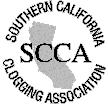The goal in cue sheet writing should always be to enable the reader to grasp the idea of the step being done with a minimum of effort. The more complicated the dance, the step, and the timing, the more information we must give (foot designators, number of heel beats in a line, count designators for where each beat falls.)
The use of abbreviations is intended as a shorthand method of getting a routine on paper in the least amount of space, but never use an abbreviation if your intent is not clear. It is better to write out a complete step name rather than use abbreviations if someone may misunderstand what you mean to say. If you use something other than a standard abbreviation, an explanation should be written at the bottom of the page (example: SDGC = Stop Dancing and Get a Coke!) The rule is WHEN IN DOUBT, WRITE IT OUT! |
| L | DS | | SL | | R | | SH | SH | R | | KICK | |
|
| R | | KICK | | DS | | S | SH | SH | | S | | SL |
| &1 | & | 2 | &3 | & | 4 | &5 | &6 | & | 7 | & | 8 |
In preparing a cue sheet, the horizontal notation of cues is the most
widely used style with steps on one line, foot designators below, and timing
designators below that.
| DS | KICK | SL | DS | RS | SH/SH | SH/SH | RS | KICK | SL |
| L | R | L | R | LR | L & R | L & R | LR | L | R |
| &1 | & | 2 | &3 | &4 | & 5 | & 6 | &7 | & | 8 |
|
 Southern California Clogging Association
Southern California Clogging Association
 Southern California Clogging Association
Southern California Clogging Association